Blog
- Home
- Blog
Transform Your Home's Energy: The Ultimate Guide to Choosing the Perfect Solar Panels
As the global push for renewable energy intensifies, homeowners are increasingly turning to solar panels as a viable solution for sustainable living. According to a report by the International Energy Agency (IEA), solar power is set to become the world's largest source of electricity by 2025, with an expected increase of over 15% in global solar capacity annually. This shift is driven by technological advancements, decreased costs, and favorable policies that encourage clean energy solutions. The National Renewable Energy Laboratory (NREL) states that over 2 million homes in the U.S. have adopted solar panel systems, highlighting their growing popularity and effectiveness. However, with the multitude of options available, selecting the right solar panel can be overwhelming. This guide aims to provide homeowners with essential insights and data to help choose the perfect solar panel system, ensuring both efficiency and compatibility with their energy needs.

Understanding the Different Types of Solar Panels: Monocrystalline, Polycrystalline, and Thin-Film
When selecting solar panels for your home, understanding the differences between monocrystalline, polycrystalline, and thin-film solar technologies is crucial. Monocrystalline panels are known for their high efficiency and sleek design, often achieving efficiency rates above 20%. According to a report by the National Renewable Energy Laboratory (NREL), these panels typically have a longer lifespan, often exceeding 25 years, making them a solid investment for homeowners looking for long-term energy savings.
On the other hand, polycrystalline panels offer a more budget-friendly option while maintaining reasonable efficiency levels, typically around 15-20%. These panels are created from multiple silicon crystals, making the manufacturing process simpler and less expensive. However, they tend to occupy more space for the same power output compared to monocrystalline panels. Additionally, thin-film solar panels represent an emerging technology that is lightweight and flexible, making them ideal for various applications, including those with structural limitations. While they generally have lower efficiency rates, averaging about 10-12%, they can be an excellent choice for large-scale installations where space isn’t a significant concern.
Understanding these differences allows homeowners to assess their energy needs, budget, and aesthetic preferences, ensuring that they choose the solar panel type that best fits their specific situation.
Evaluating Solar Panel Efficiency: How to Interpret Ratings and Performance Data
When evaluating solar panel efficiency, understanding how to interpret ratings and performance data is crucial for making an informed choice. The efficiency rating, typically expressed as a percentage, indicates how much sunlight is converted into usable electricity. Higher efficiency panels, often ranging between 18% to 22%, may cost more upfront but can yield greater energy output over time, making them a worthwhile investment. It's important to consider the specifics of your installation area, as the amount of sunlight your location receives can significantly influence the overall effectiveness of different solar panels.
Additionally, pay attention to other performance metrics such as temperature coefficient, which measures a panel's efficiency loss under high temperatures, and warranty terms that reflect the manufacturer's confidence in their product longevity. Performance data provided by manufacturers should include detailed information on outputs under various testing conditions, further allowing consumers to draw comparisons between different models. By analyzing these technical specifications, homeowners can better assess which solar panels will not only fit their energy needs but also provide optimal performance for their specific environment.
Transform Your Home's Energy: The Ultimate Guide to Choosing the Perfect Solar Panels
| Solar Panel Type | Efficiency (%) | Power Output (W) | Temperature Coefficient (%/°C) | Warranty (Years) |
|---|---|---|---|---|
| Monocrystalline | 20.5 | 320 | -0.35 | 25 |
| Polycrystalline | 15.5 | 280 | -0.40 | 25 |
| Thin-Film | 11.0 | 150 | -0.20 | 10 |
| Bifacial | 22.0 | 370 | -0.35 | 30 |
Cost Analysis: Comparing Solar Panel Prices and Their Long-Term Financial Impacts
When considering the installation of solar panels, cost analysis plays a pivotal role in making an informed decision. According to the Solar Energy Industries Association (SEIA), the average cost of solar panel installation ranged from $3 to $4 per watt in 2022, depending on various factors such as system size, technology, and geographical location. This means a typical residential solar system (around 6kW) could cost between $18,000 and $24,000 before any incentives or rebates.

In addition to upfront costs, homeowners should also evaluate the long-term financial impacts of their solar installation. The National Renewable Energy Laboratory (NREL) projects that homeowners can save anywhere from $10,000 to $30,000 on electricity bills over the lifespan of a solar system, typically 25 to 30 years. Furthermore, many states offer tax credits, rebates, and net metering, which can significantly reduce initial investments. By weighing both the initial costs against the potential savings, homeowners can effectively determine the financial viability and long-term benefits of transitioning to solar energy.
Exploring Incentives and Rebates: Maximizing ROI with Government Programs for Solar Energy
Government incentives and rebates play a crucial role in maximizing the return on investment (ROI) for solar energy systems. According to the Solar Energy Industries Association (SEIA), the federal solar tax credit allows homeowners to deduct 26% of their solar installation costs from their federal taxes, significantly reducing the upfront expense. Furthermore, many states offer additional incentives, such as performance-based incentives (PBIs) and sales tax exemptions. For instance, California’s SGIP program provides up to $0.75 per watt, translating into substantial savings for solar adopters.
In addition to federal and state programs, local utilities often have rebates and incentives aimed at promoting renewable energy usage. Research from the National Renewable Energy Laboratory (NREL) indicates that utility incentives can enhance the economics of solar energy projects, with some programs offering rebates of up to $2,500. These incentives not only help homeowners reduce their initial investments but also improve payback periods, making solar energy an increasingly attractive option. By strategically leveraging these programs, homeowners can ensure that their transition to solar power is both financially sound and environmentally sustainable.

Key Factors Influencing Solar Panel Selection: Location, Climate, and Installation Considerations
When selecting solar panels for your home, several key factors play a crucial role, including location, climate, and installation considerations. According to the National Renewable Energy Laboratory (NREL), geographical location directly impacts solar energy potential. For instance, regions with higher solar irradiance, such as the southwestern United States, can benefit more from solar installations than areas with limited sunlight. This means homeowners in sunny climates can generate more energy and enjoy greater savings on their electricity bills.
Climate also affects solar panel performance and efficiency. Research from the Solar Energy Industries Association (SEIA) indicates that extreme temperatures can influence the energy output of solar panels, with performance typically peaking in cooler, sunnier conditions. Homeowners in areas prone to harsh weather need to consider durable, weather-resistant panel options to ensure longevity and reliability.
Furthermore, installation factors such as roof orientation, angle, and shading from surrounding structures are critical in optimizing solar energy capture. Studies show that a roof facing south with a tilt between 30 to 45 degrees can significantly enhance energy production, emphasizing the importance of professional assessment during the installation process.
Related Posts
-
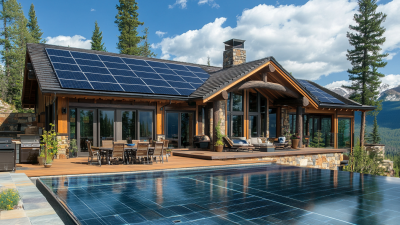
Global Insights on Residential Solar Panels Market by 2025 Trends Data and Strategies for Success
-
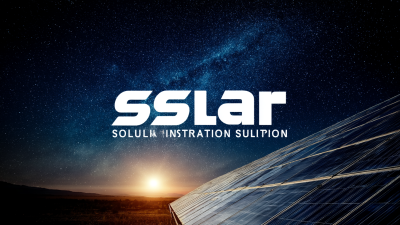
How to Identify Top Suppliers for Best Solar Panel Installation Worldwide
-

Transforming Home Energy Solutions by 2025 Trends in Solar Panels for Sustainable Living
-
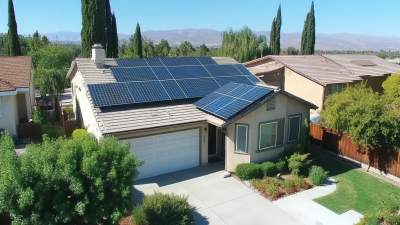
Global Solar Panel Installation Market Insights for 2025 and Future Innovations
-
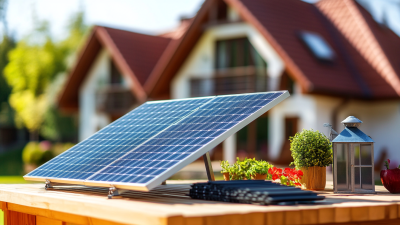
Solar Panel Market Forecast 2025: Strategies for Global Buyers to Maximize Investment Opportunities
-
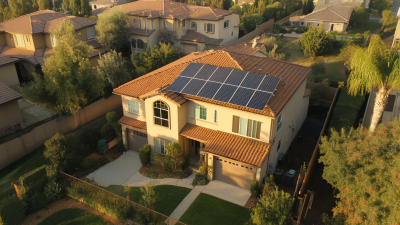
How to Maximize Efficiency in Your Solar Panel Installation Project